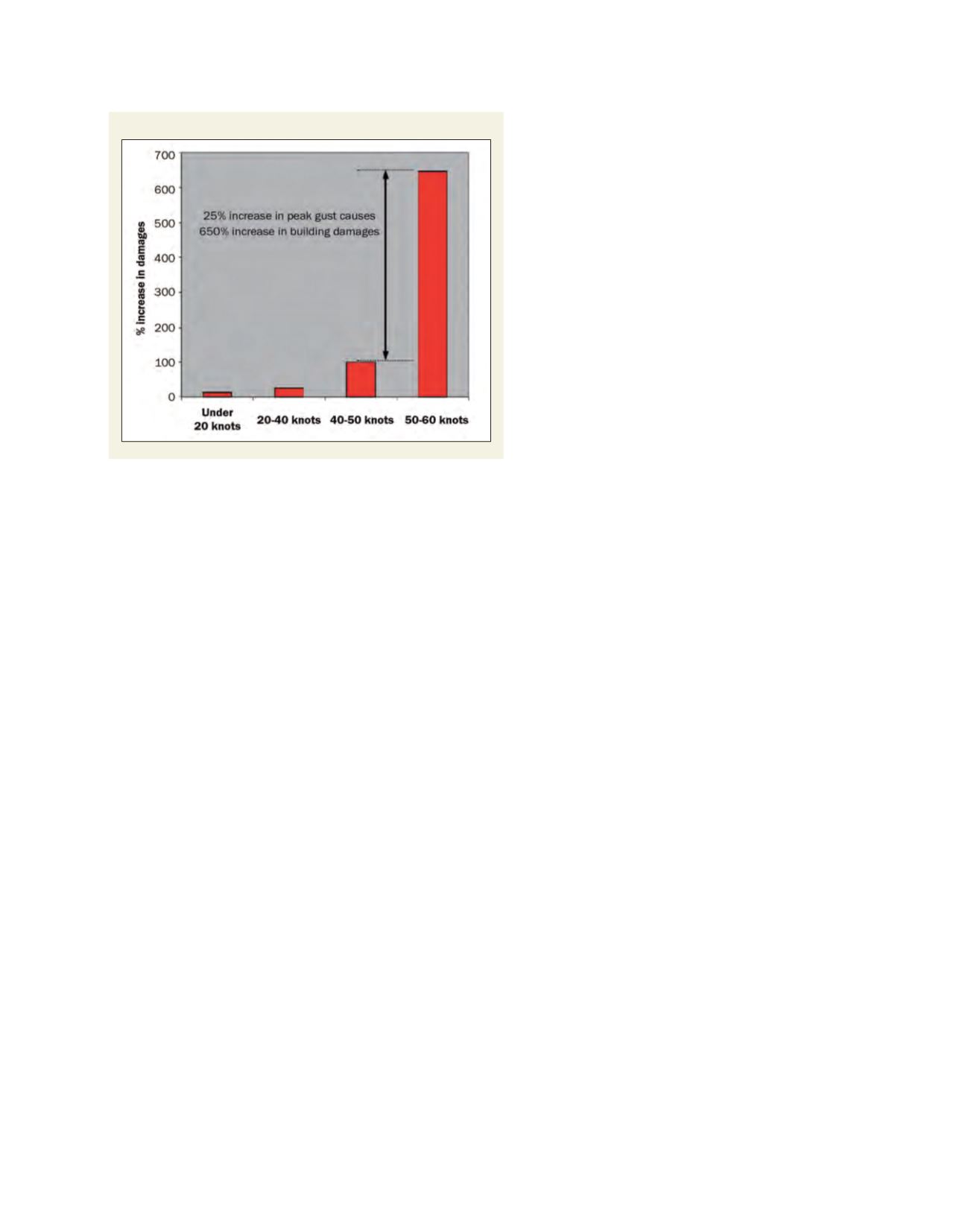

[
] 225
R
isk
G
oveRnance
and
M
anaGeMent
as the climate changes. Regions where climate trends are encroaching
on design limits will require increases in climatic design values for new
structures and reinforcements to existing structures identified as at risk.
13
Crisis management: moving from weather prediction to risk
prediction
One of the most effective measures for disaster readiness and emergency
response is an early warning system that delivers accurate information
dependably and on time. Warnings buy the time needed to evacuate
populations, reinforce infrastructure, reduce potential damage or prepare
for emergency response. But warning systems are only as good as their
weakest link andmust be accompanied by effective hazard response poli-
cies and actions.
Forensic analysis of disasters often reveals that communica-
tion with the public was not effective enough, and scientific and
technical information (for example, wind gusts greater than140
kilometres/hour) was not properly interpreted by authorities and
the public in terms of risk. Warning messages must be received and
understood by a complex target audience, and establish a shared
meaning between the issuers and the decision makers they intend
to inform. Because emergency responders and the public are often
unable to translate scientific information into risk levels, future
work is needed to identify general impacts, prioritize the most
dangerous hazards, assess potential contributions from cumulative
and sequential events and identify thresholds linked to escalating
risks for infrastructure, communities and disaster response.
Recognizing that individual and combined hazards (for example,
excessive heat and poor air quality) can result in complex emer-
gency response situations, the World Meteorological Organization
(WMO), along with its NMHS and UN partners, is working to estab-
lish multi-hazard early warning systems. Collaboration is underway
with WHO to develop heat health warning systems that enhance
adaptation to deadly heat waves and malaria. Other collaborative
work with the Food and Agriculture Organization of the United
Nations focuses on the monitoring and development needed for
early warnings of locust swarms.
14
Creeping disasters
Some emerging disasters first appear as ‘creeping’ hazards,
evolving over a period of days to months. This timing
presents different opportunities for disaster management.
Floods and droughts often result from cumulative or
sequential multi-hazard events accompanied by an inherent
vulnerability. For example, flooding can result from unex-
ceptional rainfall when preceded by several days of rain and
saturated ground conditions. Specific criteria for warnings
may need to consider antecedent rainfall as well as saturated
or frozen ground conditions before entering into a rainfall
event. The challenge for forecasting flooding risks under
antecedent precipitation is the uncertainty inmodelling and
predicting preceding soil moisture conditions.
Droughts represent a powerful creeping hazard capable
of bringing great losses to very large regions. Monitoring
measures need to be region, user and impact specific. Water
managers, agricultural producers, hydro-electric power
plant operators and ecosystem managers can all require
different monitoring indices to characterize the severity of
conditions and necessary responses. Consequently, drought
early warning systems work best when designed to detect
cumulative precipitation deficits using regionally critical
thresholds of water supply conditions.
15
Whether dealing with fast or creeping hazards, early
warning systems are most effective when they provide
adequate lead times for the activation of emergency
response plans and target the people and regions mainly at
risk. In many regions, this includes an appreciation of local
and indigenous knowledge.
Recovery and rebuilding
The disaster recovery and rebuilding phase requires careful
integration of services from all of the other pillars.
16
These
include tailored weather warning services to protect affected
populations rendered even more vulnerable by the disas-
ter, and updated atmospheric hazards and climatic design
information to rebuild more disaster-resilient communities.
Critical to recovery operations is the restoration of vital infra-
structure. It becomes difficult, if not impossible, to coordinate
emergency operations without the benefit of some function-
ing communications and transportation infrastructure.
Preparing for climate change: ‘no regrets’
One of the most threatening aspects of global climate
change, given even the most optimistic greenhouse gas
mitigation successes, is the likelihood that extreme weather
events will become more variable, intense and frequent
as storm tracks shift. UNEP financial services initiative
anticipates that the global cost of natural disasters will top
USD300 billion by the year 2050
17
if the likely impacts of
changing climate are not countered with aggressive disaster
reduction measures. ‘No regrets’ adaptation actions taken
today provide opportunities for regions to reduce current
vulnerabilities and become better prepared for future
challenges. Barriers to managing the risks associated with
current climate variability are the same barriers that will
inhibit regions and nations fromaddressing future increases
in risk due to climate change.
Building claims as a function of peak gust speed (Australia)
Source: Coleman, 2002
















